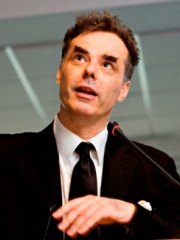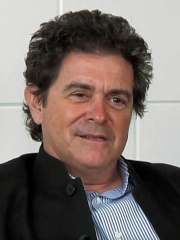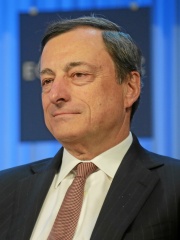

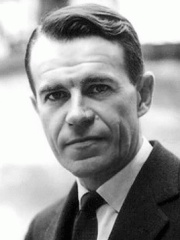
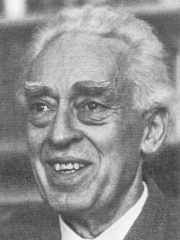
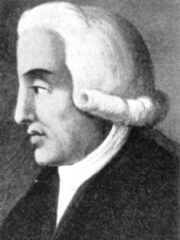
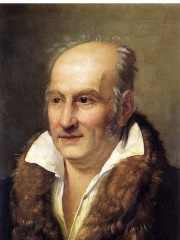
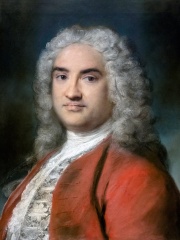

The Most Famous
ECONOMISTS from Italy
This page contains a list of the greatest Italian Economists. The pantheon dataset contains 414 Economists, 12 of which were born in Italy. This makes Italy the birth place of the 5th most number of Economists behind Germany, and France.
Top 10
The following people are considered by Pantheon to be the top 10 most legendary Italian Economists of all time. This list of famous Italian Economists is sorted by HPI (Historical Popularity Index), a metric that aggregates information on a biography's online popularity. Visit the rankings page to view the entire list of Italian Economists.

1. Mario Draghi (b. 1947)
With an HPI of 76.21, Mario Draghi is the most famous Italian Economist. His biography has been translated into 81 different languages on wikipedia.
Mario Draghi (Italian: [ˈmaːrjo ˈdraːɡi]; born 3 September 1947) is an Italian politician, economist, academic, banker, statesman, and civil servant, who served as the prime minister of Italy from 13 February 2021 to 22 October 2022. Prior to his appointment as prime minister, he served as the president of the European Central Bank (ECB) between 2011 and 2019. Draghi was also the chair of the Financial Stability Board between 2009 and 2011, and governor of the Bank of Italy between 2006 and 2011. After a lengthy career as an academic economist in Italy, Draghi worked for the World Bank in Washington, D.C., throughout the 1980s, and in 1991 returned to Rome to become director general of the Italian Treasury. He left that role after a decade to join Goldman Sachs, where he remained until his appointment as governor of the Bank of Italy in 2006. His tenure as Governor coincided with the 2008 Great Recession, and in the midst of this he was selected to become the first chair of the Financial Stability Board, the global standard-setter that replaced the Financial Stability Forum. He left those roles after his nomination by the European Council in 2011 to serve as president of the ECB. He presided over the institution during the Eurozone crisis, becoming famous throughout Europe for saying that he would be prepared to do "whatever it takes" to prevent the euro from failing. In 2014, Draghi was listed by Forbes as the eighth-most powerful person in the world. In 2015, Fortune magazine ranked him as the world's "second greatest leader". He is also the only Italian to be listed three times in the Time 100 annual listicle. In 2019, Paul Krugman described him as "the greatest central banker of modern times." Moreover, thanks to his monetary policies, he is widely considered the "saviour of the euro" during the European debt crisis. He has been nicknamed Super Mario by some media, a nickname that was popularised during his time as president of the ECB, when he was credited by numerous sources as having played a key role in combatting the Eurozone crisis. After Draghi's term as ECB President ended in 2019, he initially returned to private life. On 3 February 2021, in the midst of the COVID-19 pandemic in Italy, Draghi was invited by President Sergio Mattarella to form a government of national unity (Draghi Cabinet), following the resignation of Giuseppe Conte. After successful negotiations with parties including the League (Lega - Salvini Premier), the Five Star Movement (M5S), the Democratic Party (PD), and Forza Italia (FI), Draghi was sworn in as prime minister on 11 February, pledging to oversee effective implementation of COVID-19 economic stimulus. Draghi was rated highly in public opinion polls in Italy during his time as prime minister; at the end of his first year in office Politico Europe ranked him as the most powerful person in Europe and The Economist named Italy as "Country of the Year", singling out Draghi's leadership as central to its nomination. On 14 July 2022, the M5S revoked support to Draghi's coalition government regarding a decree concerning economic stimulus to offset the energy crisis. On the same day, despite having won a confidence vote, Draghi announced his resignation as prime minister, which was rejected by President Mattarella. On 21 July, Draghi resigned for a second time following the failure of a confidence vote to pass with an absolute majority due to the withdrawals of M5S, Lega, and FI. On the same day, President Mattarella accepted the resignation and Draghi remained in office as caretaker prime minister. He was succeeded by Giorgia Meloni on 22 October 2022.

2. Franco Modigliani (1918 - 2003)
With an HPI of 69.67, Franco Modigliani is the 2nd most famous Italian Economist. His biography has been translated into 54 different languages.
Franco Modigliani (US: ; Italian: [modiʎˈʎaːni]; 18 June 1918 – 25 September 2003) was an Italian-American economist and the recipient of the 1985 Nobel Memorial Prize in Economics. He was a professor at University of Illinois at Urbana–Champaign, Carnegie Mellon University, and MIT Sloan School of Management.

3. Carlo M. Cipolla (1922 - 2000)
With an HPI of 65.73, Carlo M. Cipolla is the 3rd most famous Italian Economist. His biography has been translated into 25 different languages.
Carlo Maria Cipolla (15 August 1922 – 5 September 2000) was an Italian economic historian. He was a member of both the American Academy of Arts and Sciences and the American Philosophical Society.

4. Piero Sraffa (1898 - 1983)
With an HPI of 63.00, Piero Sraffa is the 4th most famous Italian Economist. His biography has been translated into 27 different languages.
Piero Sraffa FBA (5 August 1898 – 3 September 1983) was an influential Italian political economist who served as lecturer of economics at the University of Cambridge. His book Production of Commodities by Means of Commodities is taken as founding the neo-Ricardian school of economics.
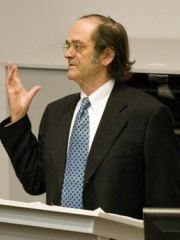
5. Giovanni Arrighi (1937 - 2009)
With an HPI of 61.17, Giovanni Arrighi is the 5th most famous Italian Economist. His biography has been translated into 21 different languages.
Giovanni Arrighi (7 July 1937 – 18 June 2009) was an Italian economist, sociologist and world-systems analyst, from 1998 a Professor of Sociology at Johns Hopkins University. His work has been translated into over fifteen languages.

6. Ferdinando Galiani (1728 - 1787)
With an HPI of 60.16, Ferdinando Galiani is the 6th most famous Italian Economist. His biography has been translated into 17 different languages.
Ferdinando Galiani (2 December 1728, Chieti, Kingdom of Naples – 30 October 1787, Naples, Kingdom of Naples), known in French contexts as Abbé Galiani, was an Italian economist, a leading Italian figure of the Enlightenment. Friedrich Nietzsche referred to him as "a most fastidious and refined intelligence" and "the most profound, discerning, and perhaps also the filthiest man of his century."

7. Gian Domenico Romagnosi (1761 - 1835)
With an HPI of 60.12, Gian Domenico Romagnosi is the 7th most famous Italian Economist. His biography has been translated into 16 different languages.
Gian Domenico Romagnosi (Italian pronunciation: [romaɲˈɲoːzi]; 11 December 1761 – 8 June 1835) was an Italian philosopher, economist and jurist.

8. Pietro Verri (1728 - 1797)
With an HPI of 56.83, Pietro Verri is the 8th most famous Italian Economist. His biography has been translated into 18 different languages.
Count Pietro Verri (12 December 1728 – 28 June 1797) was an Italian economist, historian, philosopher and writer. Among the most important personalities of the 18th-century Italian culture, he is considered among the fathers of the Lombard reformist Enlightenment and the most important pre-Smithian authority on cheapness and plenty.

9. Mariana Mazzucato (b. 1968)
With an HPI of 52.59, Mariana Mazzucato is the 9th most famous Italian Economist. Her biography has been translated into 20 different languages.
Mariana Francesca Mazzucato (born June 16, 1968) is an Italian-American economist and academic. She is a professor in the Economics of Innovation and Public Value at University College London (UCL) and founding director of the UCL Institute for Innovation and Public Purpose (IIPP). She is best known for her work on dynamics of technological change, the role of the public sector in innovation (including modern “mission-oriented” policies), and the concept of value in economics. The New Republic have called her one of the "most important thinkers about innovation". Mazzucato has published widely in the fields of innovation economics, value theory and political economy, and more recently on climate change and the triple planetary crisis. She is the author of various books, including The Entrepreneurial State: Debunking Public vs. Private Sector Myths, The Value of Everything: Making and Taking in the Global Economy, and Mission Economy: A Moonshot Guide to Changing Capitalism. Her latest book, The Big Con: How the Consulting Industry Weakens our Businesses, Infantilizes our governments and Warps our Economies, co-authored with Rosie Collington, analyses the problematic relationship of the consulting industry to businesses and government administrations. Her career has emphasised translating economic ideas into policy and she holds numerous high-level policy roles. Mazzucato is currently a member of the UNESCO High Level Expert Group on Ecosystem Level AI Governance, and member of the WEF Centre for the New Economy and Society Advisory Board. She was also appointed member of the Presidential Economic Advisory Council (PEAC) of South Africa by President Cyril Ramaphosa in 2019. Previous roles include co-chairing the Group of Experts on the G20 Taskforce for the Global Mobilization against Climate Change alongside Dr. Vera Songwe, co-chairing the Global Commission on the Economics of Water(GCEW) with WTO Director-General Ngozi Okonjo-Iweala, Professor Johan Rockström and Singapore Senior Minister Tharman Shanmugaratnam; chair of the World Health Organization's Council on the Economics of Health for All, a member of the Scottish Government's Council of Economic Advisers, and the United Nations' High-Level Advisory Board on Economic and Social Affairs. In 2021, in recognition of her contributions to economic theory and policy, Mazzucato received the Grande Ufficiale Ordine al Merito della Repubblica Italiana from the Italian President, Italy's highest civilian honour.
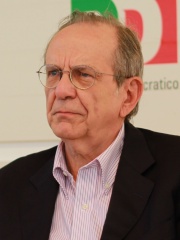
10. Pier Carlo Padoan (b. 1950)
With an HPI of 51.61, Pier Carlo Padoan is the 10th most famous Italian Economist. His biography has been translated into 18 different languages.
Pier Carlo Padoan (Italian: [ˈpjɛr ˈkarlo padoˈan, - ˈpaːdoan]; born 19 January 1950) is an Italian economist who served as Minister of Economy and Finance of Italy from 2014 to 2018. Since April 2021 he is Chairman of the Board of Directors of the Italian bank UniCredit. Padoan was director of the International Monetary Fund for Italy from 2001 to 2005. On 1 June 2007, he became Deputy Secretary General of the Organisation for Economic Co-operation and Development (OECD).
People
Pantheon has 12 people classified as Italian economists born between 1728 and 1968. Of these 12, 4 (33.33%) of them are still alive today. The most famous living Italian economists include Mario Draghi, Mariana Mazzucato, and Pier Carlo Padoan. The most famous deceased Italian economists include Franco Modigliani, Carlo M. Cipolla, and Piero Sraffa.
Living Italian Economists
Go to all RankingsMario Draghi
1947 - Present
HPI: 76.21
Mariana Mazzucato
1968 - Present
HPI: 52.59
Pier Carlo Padoan
1950 - Present
HPI: 51.61
Daniele Archibugi
1958 - Present
HPI: 50.77
Deceased Italian Economists
Go to all RankingsFranco Modigliani
1918 - 2003
HPI: 69.67
Carlo M. Cipolla
1922 - 2000
HPI: 65.73
Piero Sraffa
1898 - 1983
HPI: 63.00
Giovanni Arrighi
1937 - 2009
HPI: 61.17
Ferdinando Galiani
1728 - 1787
HPI: 60.16
Gian Domenico Romagnosi
1761 - 1835
HPI: 60.12
Pietro Verri
1728 - 1797
HPI: 56.83
Alberto Alesina
1957 - 2020
HPI: 49.56
Overlapping Lives
Which Economists were alive at the same time? This visualization shows the lifespans of the 8 most globally memorable Economists since 1700.

